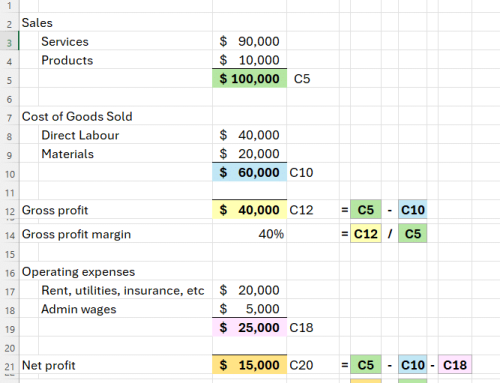Putting capital risk in perspective for small-medium business
In this set of insights for Australian businesses I provide a view on different capital risks that business owners often have to weigh up. Also in this briefing is an update on the flow of credit for investing in business and personal wealth strategies. As a business coach, my intention is to provide information to business owners so you assess and make informed decisions for your business.
3 options to grow your business and the associated capital risk for each strategy
When your sales and marketing strategies start to bear fruit, demand picks up. Faced with the need to expand the team to cater for the increased workload, most business owners will confess to feeling a little anxious about adding to their staffing costs. Among the top concerns are, “What if the increase in work is only temporary and it dries up after I employ more people?” and, “Getting more employees is expensive – can’t we try to handle the work with the existing team?”
It’s normal to have those concerns, and it is always good to check yourself when weighing up decisions like this.
A couple of things to note:
- If the increase in demand is for the type of work that has previously resulted in bad debts, unreasonable clients, poor payers, low margins or unrealistic deadlines, then you are right to question whether you expand your team to meet the demand. You might be better taking a pass on this type of work.
- However, if the uplift is the type of work you have deliberately set out to win and it’s part of the big picture plan you have worked on with your business coach, then you’ll know you’re on the right track.
Not all of the costs that you incur in growing your business are the same. Some are more permanent and enduring than others and therefore carry more risk.
I’ll explore three different investment decisions related to growth strategies and the respective capital at risk for each one:
- Taking on a lease
- Acquiring equipment/vehicles
- Employing staff
1. Growing your business by expanding your premises
Your growth plans may include opening a new office or showroom or factory in another location. This is a big decision and one you don’t want to make lightly based on a short-term increase in demand for your products or services. To open a new location, you’ll likely have to sign a long-term lease, then you’ll probably have to do a fit-out on the premises to convert it to suit your specific purposes.
Signing a lease is a binding cost; most leases include a personal guarantee from the director which legally commits the business owner to paying rent for the entirety of the term.
Similarly, a fit-out is a sunk cost. The design of the fit-out will suit those particular premises (for example partitioning, cabling, workstations, and storage) and so it typically can’t be transferred to another location or sold. Further, many leases have a “make good” clause, which requires the lessee to return the premises to their former condition at their own cost. In my time as a business coach, I have seen many businesses be surprised by the costs to vacate their premises. It’s why I always get my business coaching clients to review leases with a fine tooth comb.
Here’s an example of the investment and the capital at risk with a lease:
INVESTMENT: Sign a 3 x 3-year lease for premises in a new location, with annual rent of $45,000 and outgoings of $5,000.
CAPITAL AT RISK = $150,000
2. Acquiring equipment/vehicle to grow your business
If your business growth plans include equipment, machinery or vehicles then the capital at risk is a little different. These types of assets are typically bought using a hire purchase agreement or paid for upfront.
If the growth that you expected doesn’t happen or doesn’t continue at the rate you had forecast, then these physical assets can be sold. However, we all know that a vehicle instantly loses value the moment it leaves the dealership.
It’s a similar situation with machinery and equipment; if someone can buy a new piece of machinery, then why would they pay the same price for your used piece that has a thousand hours on the clock?
If you don’t have to sell quickly, you might only lose 20% of the value (including initial costs like stamp duty and financing). (If you do have to sell under time pressure, you’re likely to be forced to take an even lower price.)
Here’s an example of investment and capital at risk:
INVESTMENT: Purchase a new vehicle or piece of machinery for an all-up cost of $80,000 knowing you might not be able to sell and clear it easily for less than $65,000
CAPITAL AT RISK = $15,000
3. Expanding your business by employing additional staff
Most growth plans involve increasing the size of your team. Interestingly, this is the investment decision that many business owners deliberate on the most. A common concern is, “What if I employ more people and then there isn’t enough work for them to do?”
This is often an emotional response when business owners are anxious about the impact on their employees and their own mental energy if they have to make people redundant. This concern is often with good reason, as morale within the team can drop during redundancy processes.
However, if your growth is due to the well thought out plan you’ve developed with your business coach, then the risk is already reduced.
If you recruit carefully looking for a great candidate for your business, not just the ‘best of the bunch’, then the risk will be reduced even further.
Then if things don’t go according to plan in the first 6 months (or 12 months if you have less than 15 employees), you can make use of the Fair Work no unfair dismissal laws to let the employee go with only one weeks wage in lieu of the termination period. (See: https://www.fairwork.gov.au/ending-employment/unfair-dismissal)
Here’s an example of investment and capital at risk:
INVESTMENT: Employ a new team member on $70,000 plus super, then circumstances change (say, the work dries up) and you to have to let them go within the first 6 months of their employment.
CAPITAL AT RISK = $1,500
What this means for business owners
Not all business growth risks are equal. As demonstrated above, expanding your team carries one of the capital at risk costs. If you have a high level of confidence in the growth plan you have developed with your business coach, then be comfortable that your capital at risk when employing new team members is minimal in the scheme of things.
At Tenfold business coaching, we work with business owners to assess the risks and rewards for scaling up their business. If you’d like to speak with a business coach, call us on 03 9813 8777 or book a call back here.
———————————————
Market Insight: Business and Property Finance
Over the coming months many of you may consider purchasing property using finance or look to refinance existing property. With Tenfold Business Coaching’s knowledge of our clients’ activity and our network of contacts in the finance industry, we’re in a position to provide you with insights as to what we are seeing now and in the foreseeable future with financing.
Many of the major banks, particularly those with operations in the CBD, still have their staff working from home. This has caused their usual workflows for processing loan applications and loan pre-approvals to be severely impeded. Add to this the surge in applications for loans and loan variations as people take advantage of low interest rates, and their systems are struggling under the pressure.
We know of multiple cases where the usual timeframes for pre-approvals, credit assessment, valuations and loan paperwork have blown out by weeks and even months. We’ve also learned that several major banks have completely stopped providing pre-approvals, and several others are likely to follow suit in the next couple of months. This presents a significant problem for purchasers: how can you comfortably bid at an auction without the certainty of knowing you have finance approved?
So, if your plans for growth (for your business and/or your personal wealth creation) are likely to require finance in the next 6 months, expect that processing and approval times will take double, maybe treble, the time it would ordinarily take and get in early. If you are looking to purchase property and want the assurance of a pre-approval, then I recommend you start the finance application process sooner rather than later.
Ash
Ashley Thomson B.Eng. (Hons), Grad. Dip. Mgmt, MEI
Managing Director
Tenfold Business Coaching




